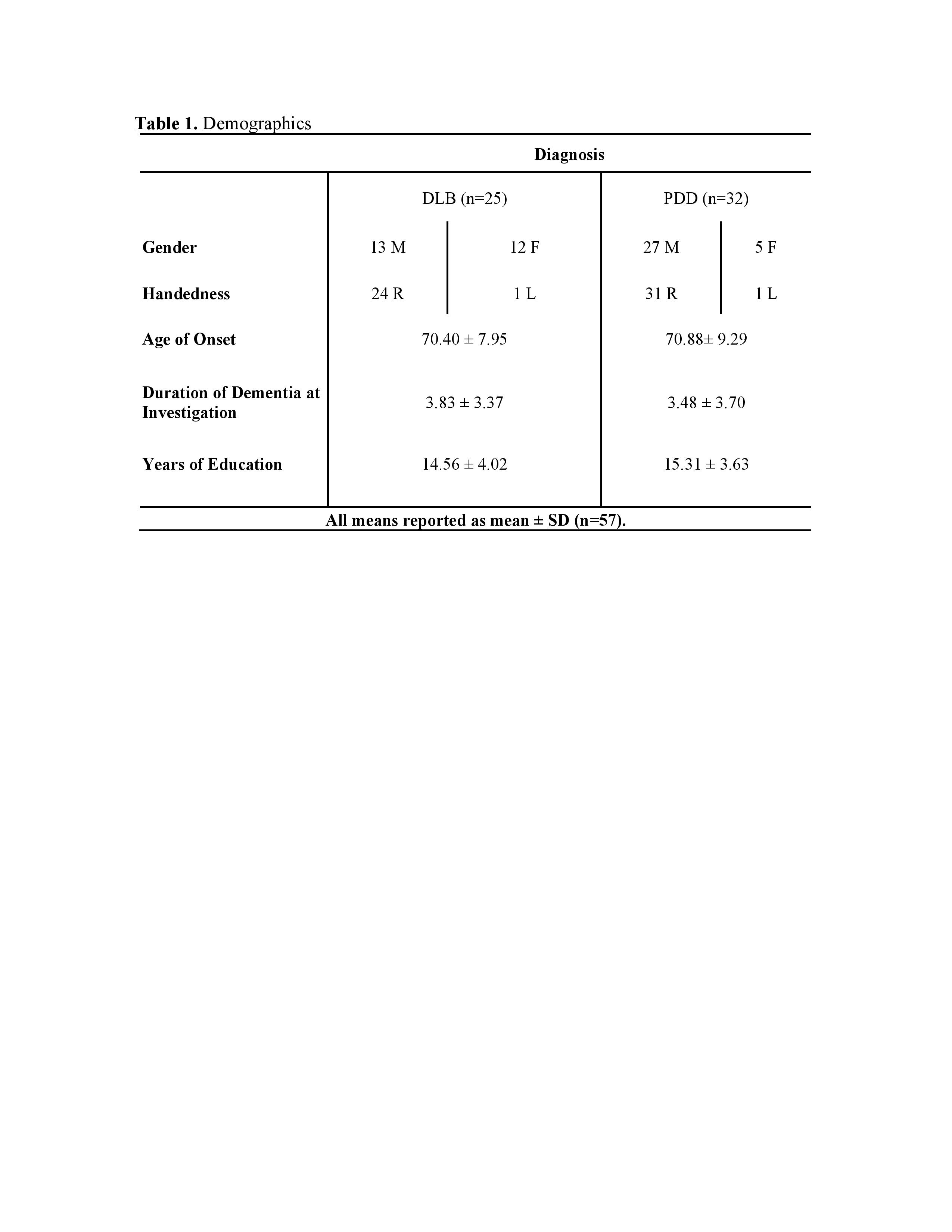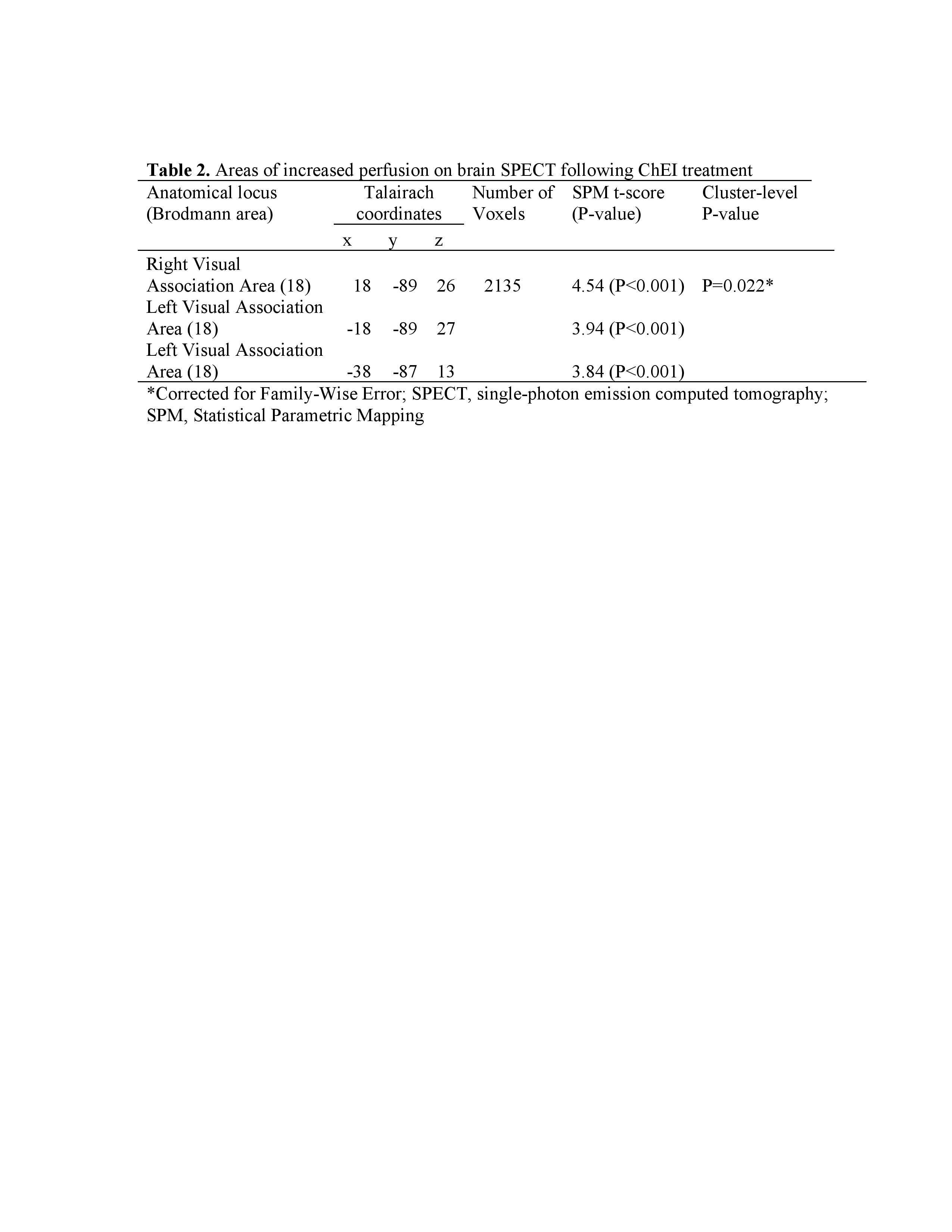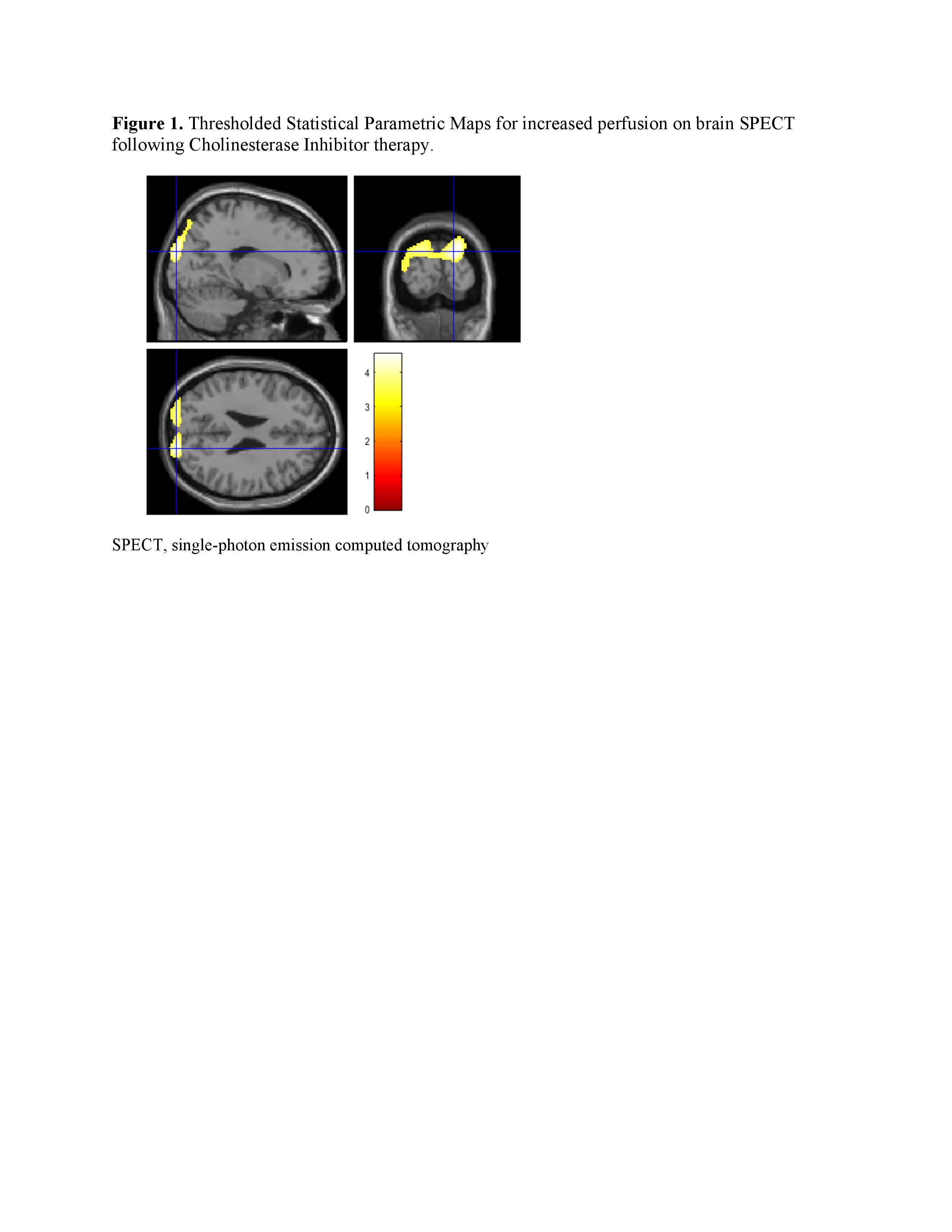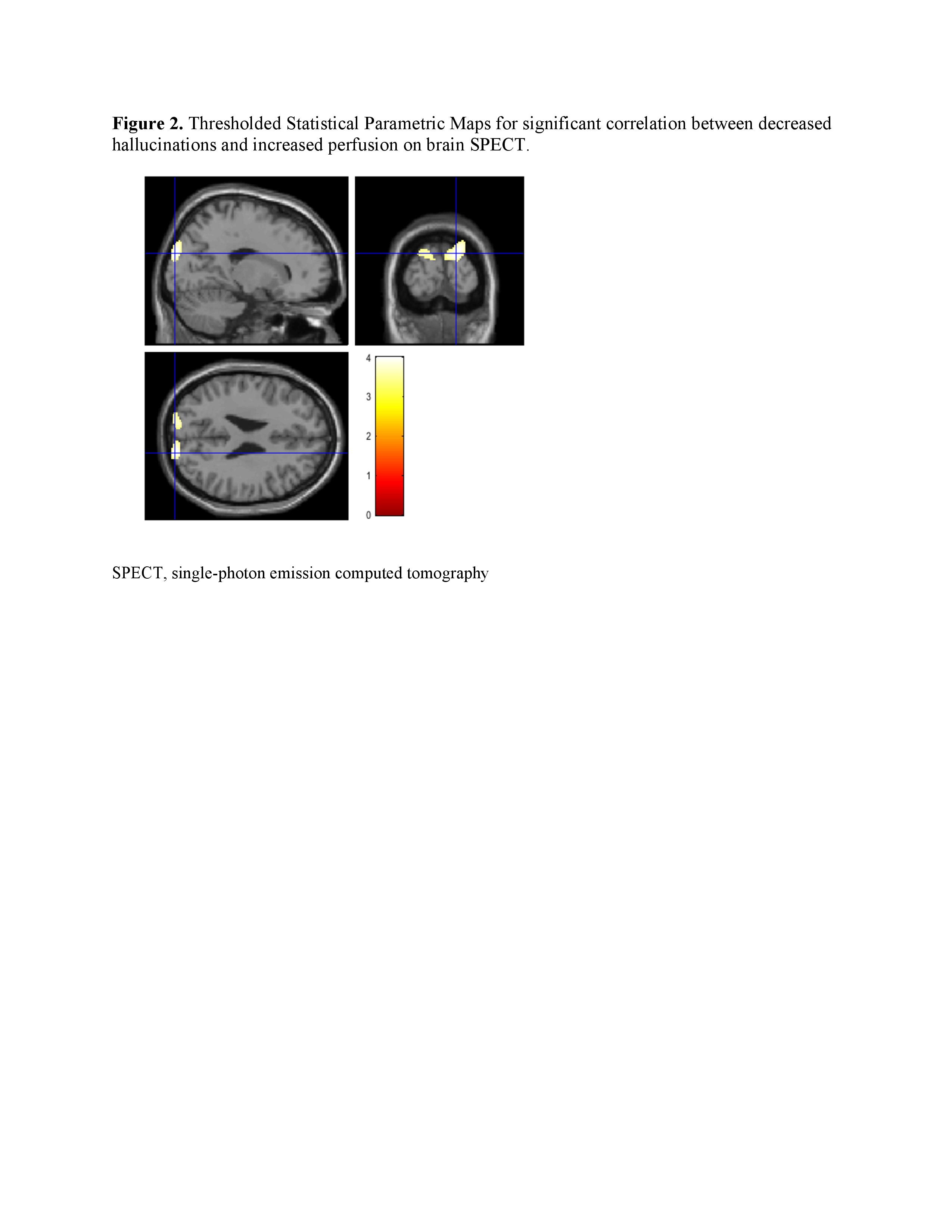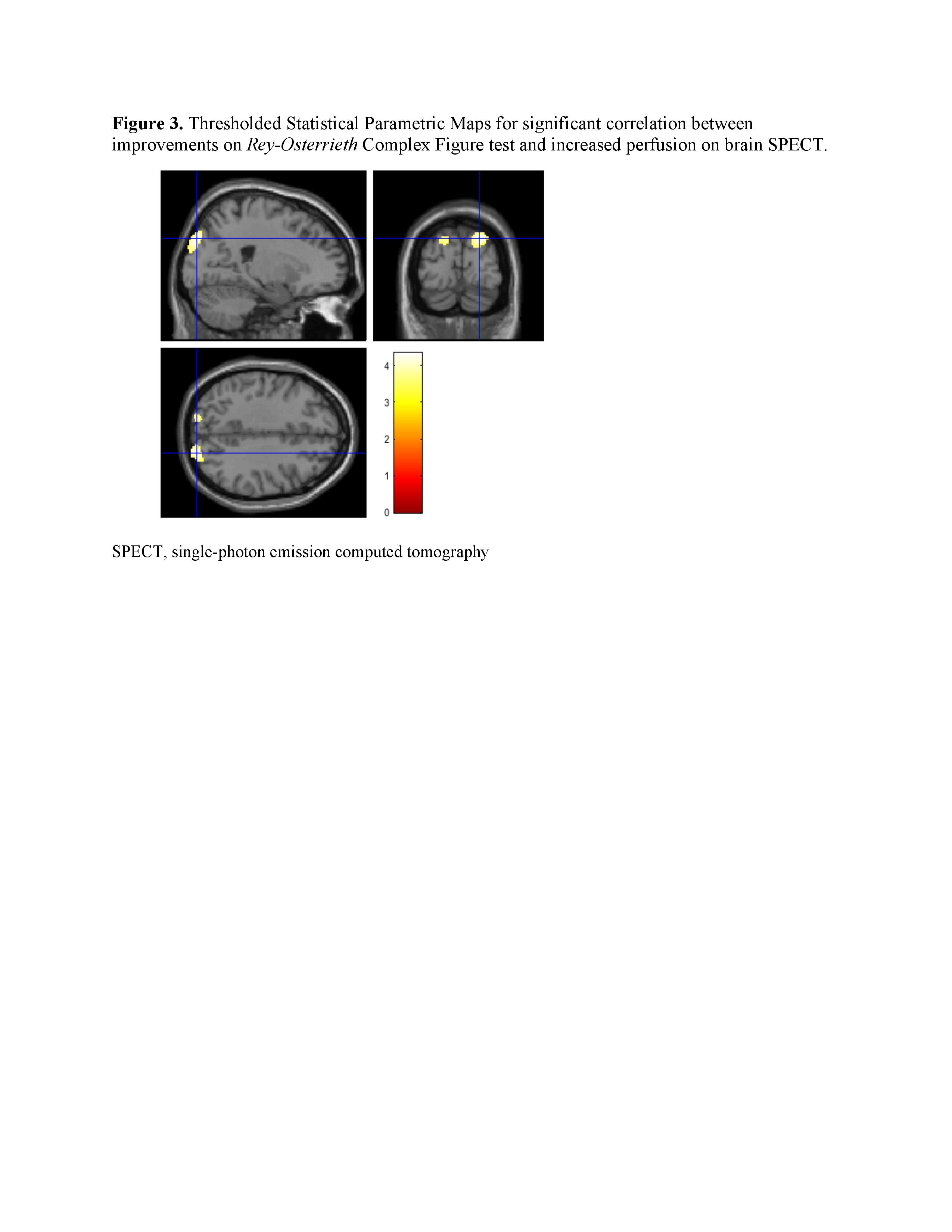Session Information
Date: Wednesday, June 7, 2017
Session Title: Neuroimaging (Non-PD)
Session Time: 1:15pm-2:45pm
Location: Exhibit Hall C
Objective: The objective is to investigate functional neuroimaging correlates of response to ChEIs in LBD.
Background: Lewy body disorders (LBD), including dementia with Lewy bodies (DLB) and Parkinson’s disease dementia (PDD), share visual hallucinations, fluctuating cognition and parkinsonism as common features. While cholinesterase inhibitors (ChEIs) are an effective treatment for cognitive and neuropsychiatric symptoms in LBD, our understanding of the effects that these drugs have in the brain in relation to response is limited.
Methods: Fifty-seven participants with LBD were recruited [table 1]. Standardized neuropsychiatric and neuropsychological batteries and brain perfusion SPECT scans were completed at baseline and at 24 week follow-up after initiation of standard doses of ChEIs. This study investigates longitudinal relationships between changes in battery test scores and cerebral perfusion on brain SPECT using statistical parametric mapping.
Results: Treatment of LBD with ChEIs over a 24-week period resulted in a significant increase in occipital perfusion (P=0.022, cluster level FWE-corrected) [table 2] [figure 1]. Significant improvements in working memory, visuospatial ability, and executive function following ChEI treatment were observed (P<0.05). Severity and frequency of visual hallucinations as measured by the Neuropsychiatric Inventory were also significantly decreased after treatment (P<0.05) and this correlated with increased occipital perfusion (P<0.001, uncorrected) [figure 2]. Improvements on the Rey–Osterrieth Complex Figure test, a measure of visuospatial ability, were also correlated with increased occipital perfusion (P<0.001, uncorrected) [figure 3].
Conclusions: As already known, ChEIs were effective at reducing visual hallucinations and improving cognitive function in LBD. Our results suggest that increased occipital perfusion could be used as a surrogate biomarker to assess effectiveness of ChEIs at treating these clinical features of LBD.
To cite this abstract in AMA style:
J. Compagnone, H. Mustaerts, J. Li, M. Freedman, K. Galit, J. Lee, J. Kennedy, R. Chen, D. Tang-Wai, A. Lang, N. Herrmann, S. Black, M. Masellis. Voxel-based Analysis of Cholinesterase Inhibitor Response in Lewy Body Disorders: A Prospective Observational Study [abstract]. Mov Disord. 2017; 32 (suppl 2). https://www.mdsabstracts.org/abstract/voxel-based-analysis-of-cholinesterase-inhibitor-response-in-lewy-body-disorders-a-prospective-observational-study/. Accessed December 16, 2025.« Back to 2017 International Congress
MDS Abstracts - https://www.mdsabstracts.org/abstract/voxel-based-analysis-of-cholinesterase-inhibitor-response-in-lewy-body-disorders-a-prospective-observational-study/

